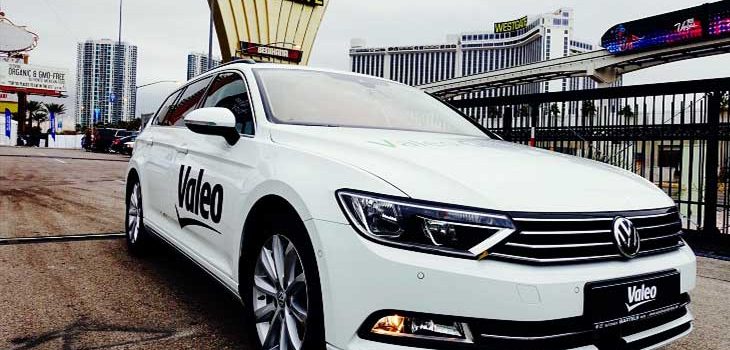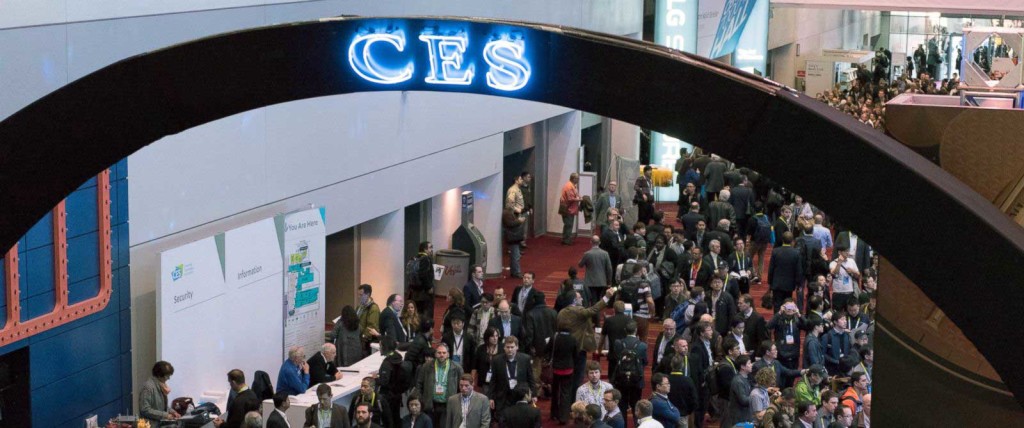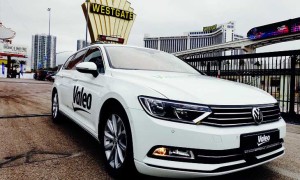
At CES this year, one of Aardvark Video’s tasks involved live-streaming from a moving vehicle in HD.
We’ve been going to CES (Consumer Electronics Show) for around 10 years. For those who aren’t familiar, CES is one of Las Vegas’s largest trade shows with over 150,000 visitors and growing. In years past we’ve even done video production work for the CES organization itself.

This year a big trend we saw was in automobile automation and driving autonomously. Everyone has probably heard of the Google driverless car. Believe me they are not alone in developing this technology and CES was loaded with exhibitors demonstrating their autonomous vehicle technology.
I always vow to have some time to see the show because all the major video equipment manufacturers are there and it’s a chance to stay up with current and future technology. However, we do advertise and as we specialize in trade show video production services (examples) exhibitors invariably call and ask us to work during the show for them. This year was no exception. Among several exhibitors we worked for were Autoliv and Valeo. These were companies involved with semi-autonomous driving. When I say “semi-autonomous” I am talking about features such as collision avoidance systems, night vision and hands-free driving.
Valeo’s Live Video Streaming Needs
 The last company, Valeo came to us with a problem that needed a solution. They have a system that uses roadway markings to allow a vehicle to navigate and steer without a driver touching the steering wheel under certain conditions. They wanted to be able to drive all over Las Vegas and live-stream HD video of the vehicle navigating the roadways hands-free to large screen monitors setup at two CES locations. They also wanted to be able to transmit pre-recorded video of the vehicle driving when it was in fact waiting to pickup passengers for demonstrations. Additionally, they wanted to be able to have flashing text saying “Live” or “Pre-Recorded” appear superimposed over the video specific to display what the status was.
The last company, Valeo came to us with a problem that needed a solution. They have a system that uses roadway markings to allow a vehicle to navigate and steer without a driver touching the steering wheel under certain conditions. They wanted to be able to drive all over Las Vegas and live-stream HD video of the vehicle navigating the roadways hands-free to large screen monitors setup at two CES locations. They also wanted to be able to transmit pre-recorded video of the vehicle driving when it was in fact waiting to pickup passengers for demonstrations. Additionally, they wanted to be able to have flashing text saying “Live” or “Pre-Recorded” appear superimposed over the video specific to display what the status was.
Live-streaming video is something we do quite a bit of but we had never done it from a moving vehicle particularly in a manner that covered vast distances and maintained a constant feed. Usually when we live-stream, it is from a single location and we are connected to the Internet through a high-speed Internet connection in a facility.
We did a considerable amount of research on the subject and found that a technology for this did exist in the form of “bonded cellular” devices which is what TV News Crews often use. This technology combines the range and power of multiple 4G cell phone networks into one stream. The bonded cellular device we used combined the power of six 4G cell phone networks and used a top cell phone carrier’s cell towers. Think of having AT&T, Verizon, Sprint, T-Mobile, etc. all built into one device. We decided by having this, we could stream to a URL address on the Internet and with laptops at each of the CES screen locations, simply use a browser to connect to our player screen.
Knowing the technology existed wasn’t really enough. We didn’t want to show up at CES with a piece of rented equipment and hope it worked. Additionally we needed to develop the capability to go from live to pre-recorded footage.
A month before the show we arranged to borrow the equipment and run a series of tests using a Ustream account as our streaming server. This worked better than expected with virtually no loss of signal anywhere we went.
This however didn’t give us the capability of switching between live or pre-recorded footage and having the necessary titling. That required us to setup our own streaming server at the SWITCH Data Center in Las Vegas. The next part of the process involved building a custom player screen and setting up and testing the system with our server. That took several days of configuration.
We were told that the vehicle that would have the system would be a Volkswagen Passat. During this testing phase we went to our local Volkswagen dealership to inspect Passats and looked at where the DC power could be tapped and how video and power wiring could be run from the camera attached to a front seat back to our Bonded Cellular transmitter and DC to AC inverter in the trunk. We did all this in preparation as we had not received the actual vehicle with the Valeo navigation system and wouldn’t till the day before CES.
When we finally saw the actual vehicle we’d use it was different than anything the dealer had. It was a hatchback model Passet that isn’t even sold in the USA. Fortunately it had power taps under the rear hatch where the Valeo system was also installed.
At this time we also installed a router for Internet connectivity at one CES location and hooked up to a hard wired Internet connection at the other. We made certain using laptops that we had live internet connections.
The configuration involved mounting a camera with an articulating arm to show the steering wheel and out the windshield. A DC to AC inverter powered the camera and the streaming transmitter. We installed everything and checked that the image through an Internet browser was showing on the large monitors at CES. It all worked and we thought we had it all under control.
AC inverter powered the camera and the streaming transmitter. We installed everything and checked that the image through an Internet browser was showing on the large monitors at CES. It all worked and we thought we had it all under control.
It wasn’t until CES started that we realized that the test conditions were different than the actual show with hundreds of people moving in and out of the vehicle for demo rides. This banged into equipment and pinched wiring. Because the vehicle was needed for demos we had little time to isolate the problems. Additionally we found that the transmitter needed to be repositioned from where we originally mounted it in the trunk because certain location conditions caused problems with transmission. Ultimately, we got all the bugs out and the system worked.
This was an example of using technology from different disciplines and adapting it to our needs. What did we gain? Well, besides getting paid for our efforts we learned how we could stream from any location that had phone service and no longer needed to be tethered to a cable. This means we can use the system for sporting events, concerts, as network news reporting and many more applications that we wouldn’t have thought feasible before. Though not at the same quality level, this isn’t terribly different in concept than what Facebook is doing with smart phones where you can now stream live right from their app. It just goes to reinforce that streaming is becoming more and more a common way to distribute information.
We at Aardvark Video consider live-streaming video production one of our specialties. We’ve produced large scale live streaming projects in Las Vegas as well as all over the world where we’ve gone on assignment.
We live-stream meetings, presentations, continuing education programs, shows and interviews from trade show booths, and more including our recent moving vehicle experience.
If you would like to learn more about how we can live-stream for you, we can be contacted at (702) 897-4477 or at aardvarkvideo@gmail.com
Tags: CES, las vegas video production company, Live Streaming, live-streaming video services, Video Production in Las Vegas


